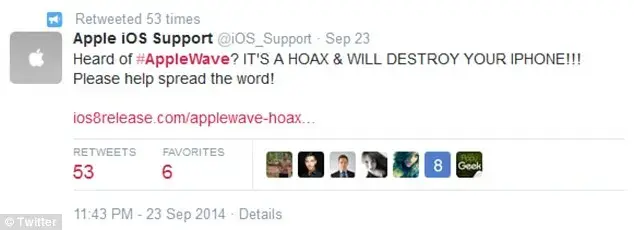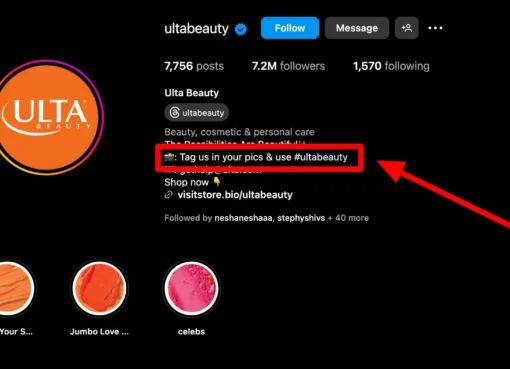“Everyone has a plan until they get punched in the mouth.” Though Mike Tyson meant that literally, his wise words certainly hold true in marketing.

And no marketer gets punched in the mouth quite as often as those who deal with user-generated content.
Need convincing? Just search for videos about Celsius on TikTok. While the drink brand does tout ingredients that “burn calories,” many TikTokkers falsely claim the fitness beverage contains everything from Ozempic to cyanide and will give you luscious locks, sturdy nails, and an early grave.
So what’s a brand to do when UGC goes off the rails? Does a smart marketer fight back or roll with the punches?
![Download Now: The Ultimate Guide to User-Generated Content [Free Ebook]](https://no-cache.hubspot.com/cta/default/53/82ab0972-f6ed-48ed-b0bc-e5e8ea32dc34.png)
Below, I cover some real-world examples of how brands have encountered controversial UGC and then pluck out some takeaways to learn from.
But first, let’s check out what’s at stake …
When UGC Attacks
Despite the old adage that “all publicity is good publicity,” there are a few different types of user-generated content that can potentially damage your brand — even if it sounds overwhelmingly positive.
Misinformation
This involves outright false claims about your product or service. Even when users are trying to promote your brand, these posts can be damaging.
Diving back into the Celsius case I noted above, the “fitness drink” became a lightning rod for false information last year when drinkers posted TikToks alleging it contained the weight-loss drug Ozempic.
At its peak, the term “Celsius drink Ozempic” reached a whopping 11.7 million searches on TikTok.
The trend got so out of hand that a spokesperson had to give a media tour to Fox and other outlets to state “Celsius products do not contain, and have never contained, Semaglutide (the generic name for Ozempic and Wegovy).”
Even though the videos might feel positive, they could very well turn off health-conscious consumers who believed the false claims that the drink snuck prescription medication into its recipe.
Should the marketing team have stepped in before it got that far? Or was it a message that needed to come from an official channel?
Misleading Content
And what about claims that are simply harmless stretches of truth instead of outright lies?
Again, we look to Celsius. TikTok’s second favorite claim about the drink is that it helps people quickly grow hair and nails. Though Celsius markets itself as a health drink — and some ingredients may be linked to hair and nail growth on their own — this is still just a rumor that is unproven by testing. A rumor that Celsius hasn’t spoken out on. But, should they?
The claims aren’t hurting anyone, they’re hard to falsify, and they’re promoting the brand, right?
Before you think of this hard-to-prove rumor as a win, remember that 80% of consumers say that UGC impacts purchasing decisions. If customers come to a brand on false grounds, they could feel misled by both UGC creators and a brand when unchecked claims aren’t true.
While a harmless claim might be a gray area, it poses an ethical and moral dilemma that brands should consider.
Negative UGC
While most UGC is geared toward the positive, in this case, the false claims are actively working against your product or service.
In the last few weeks, a health influencer with over 2 million Instagram followers claimed that Celsius contains poisonous cyanide. And not just any old cyanide, but cyanide derived from human waste. (A claim that has been debunked by PhD nutritionist Layne Norton if you don’t trust Celsius themselves.)
(Side note: If you’re on the Celsius social team and find yourself in Asheville, let me buy you a sympathy beer.)
While you may be tempted to jump in and squash these claims immediately, anything that may be considered slander or libel is best handled by your legal representation.
Hoaxes
Finally, in the case of a hoax, the creator tries to pass off the UGC as officially sourced content.
Way back when iOS8 was released (and dinosaurs roamed the Earth), pranksters shared an official-looking advertisement for a new feature called Apple Wave.
According to the fake ad, Wave gave your iPhone the ability to charge your battery “using any standard household microwave.”
(In case it needs to be said: Please don’t microwave your phone.)
This led to a double handful of social media posts showing the charred remains of iPhones.
Though the joke’s actual impact is unclear, Apple took it seriously enough to make multiple statements across various platforms, like Twitter.

Navigating User-Generated Chaos
Let’s rip this part off like a bandaid: There’s no one-size-fits-all solution for how and when to respond to off-course UGC.
Ultimately, a response (or lack thereof) greatly depends on what’s at stake for a brand and what’s being said. (Is it just your reputation on the line or a customer’s life?)
I’m not your PR or legal team and recommend that you consult trusted brand experts when and if the unthinkable happens.
But, here are a few takeaways we’ve gathered from brands who successfully navigated these scenarios:
- Prep a crisis communication plan. Despite Mike Tyson’s proverb, it’s helpful to have the skeleton of a plan ready to go. Who will handle the response? Who should be consulted? What channels will you use?
With this in place, you can be ready for a scenario where your brand gets an influx of customer web chatter, press requests, or customer service inquiries due to UGC.
- Take a deep breath. Yeah, yeah. You’ve heard this before, but don’t just scroll to the next tip. Responding in anger or fear risks making the situation ten times worse.
In a crisis, your first instincts will likely be emotional (which doesn’t always lead to the best response.) While timeliness is important, responding effectively is critical.
Take a beat and consult your team or leaders in deciding the best next step.
- Don’t go on the attack. Even if you’re totally in the right. Even if they’ve insulted your mother. Even if the user is a total jerk.
Attacking the user personally will never look good for your brand.
- Consider IF a response is even needed. If the UGC is coming from an obvious troll with 20 followers (mostly bots), responding will only bring attention to their message.
However, if a harmful message goes viral, ignoring it won’t make it go away. In that case, work closely with your PR and legal teams to craft a plan.
- Have a goal in mind. Are you aiming to remind audiences of your brand values or are you just trying to correct false claims to re-earn trust?
- Explain the “Why” behind your response: Consider statements beginning with, “To reassure our customers …” or “We want you to feel safe with our products, so …”
Disclaimer: This blog post is not legal advice, nor an exhaustively proven public-relations guide for your company to use in times of marketing controversy or crisis. Instead, it provides background information to help you better understand the cons of user-generated content and how brands have been documented to respond to it in the past. Any legal or ethical commentary or similar information is not the same as legal or PR advice, where an attorney or public relations expert applies the law or public relations tactics to your specific circumstances. We insist that you consult an attorney and seasoned PR executives if you’d like advice on your interpretation of this information or its accuracy.
In a nutshell, you may not rely on this as legal advice, or as a recommendation of any particular legal understanding.

![When UGC Goes Wrong: How Smart Brands React to Controversy [Expert Interviews]](http://blog.contentkrush.com/wp-content/uploads/2021/06/cropped-ck1.png)

![When UGC Goes Wrong: How Smart Brands React to Controversy [Expert Interviews] When UGC Goes Wrong: How Smart Brands React to Controversy [Expert Interviews]](https://accesspressthemes.com/import/vmagazine/wp-content/uploads/2018/05/u7-adss.jpg)












Comment here